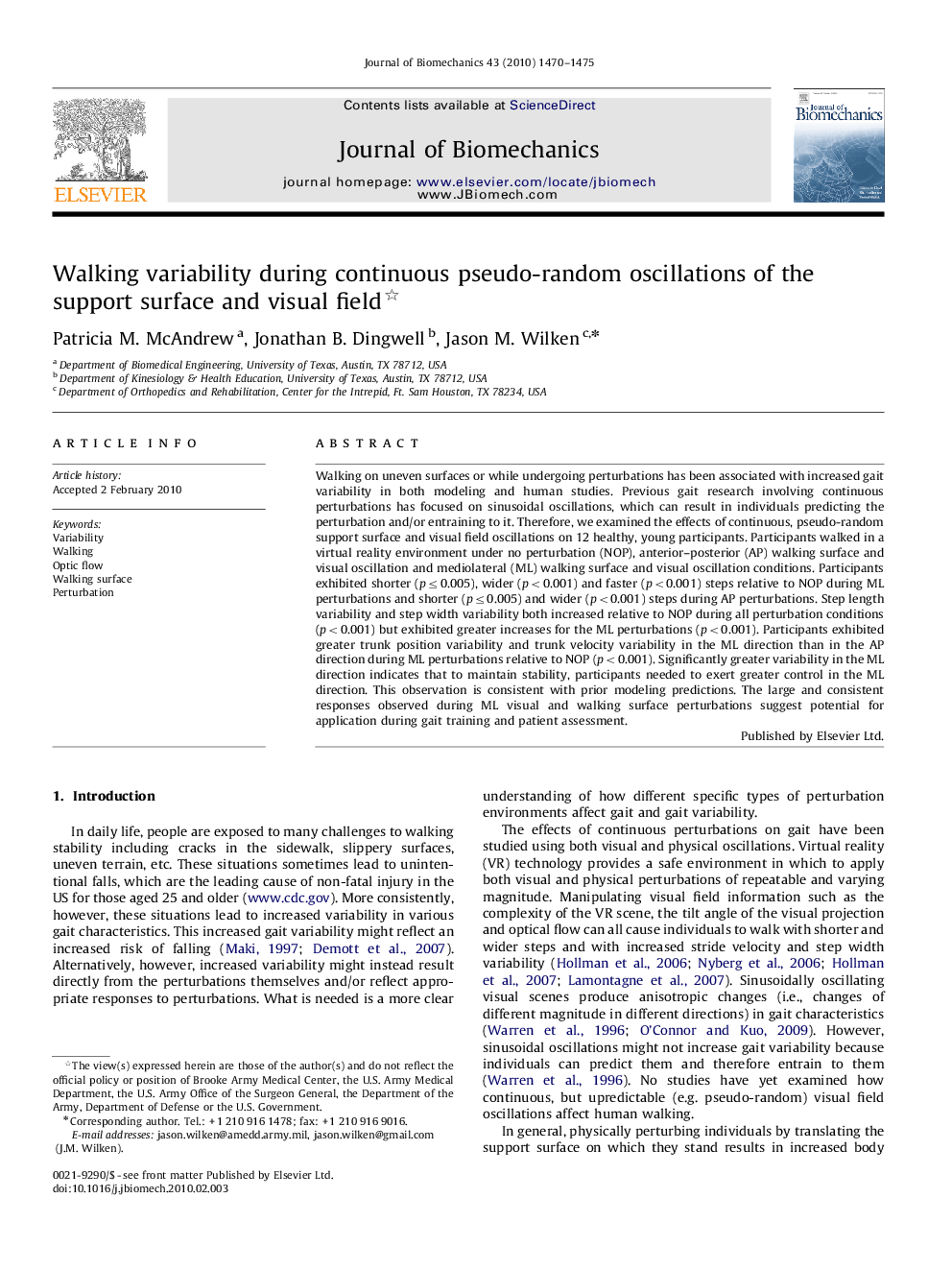| Article ID | Journal | Published Year | Pages | File Type |
|---|---|---|---|---|
| 873519 | Journal of Biomechanics | 2010 | 6 Pages |
Walking on uneven surfaces or while undergoing perturbations has been associated with increased gait variability in both modeling and human studies. Previous gait research involving continuous perturbations has focused on sinusoidal oscillations, which can result in individuals predicting the perturbation and/or entraining to it. Therefore, we examined the effects of continuous, pseudo-random support surface and visual field oscillations on 12 healthy, young participants. Participants walked in a virtual reality environment under no perturbation (NOP), anterior–posterior (AP) walking surface and visual oscillation and mediolateral (ML) walking surface and visual oscillation conditions. Participants exhibited shorter (p≤0.005), wider (p<0.001) and faster (p<0.001) steps relative to NOP during ML perturbations and shorter (p≤0.005) and wider (p<0.001) steps during AP perturbations. Step length variability and step width variability both increased relative to NOP during all perturbation conditions (p<0.001) but exhibited greater increases for the ML perturbations (p<0.001). Participants exhibited greater trunk position variability and trunk velocity variability in the ML direction than in the AP direction during ML perturbations relative to NOP (p<0.001). Significantly greater variability in the ML direction indicates that to maintain stability, participants needed to exert greater control in the ML direction. This observation is consistent with prior modeling predictions. The large and consistent responses observed during ML visual and walking surface perturbations suggest potential for application during gait training and patient assessment.
